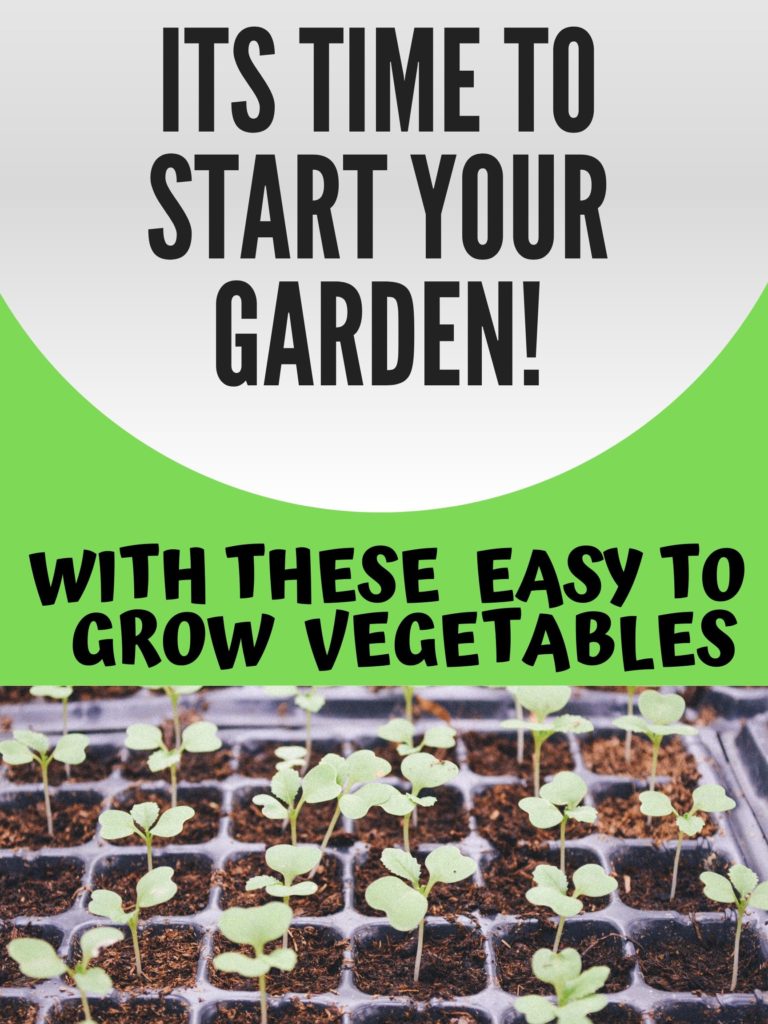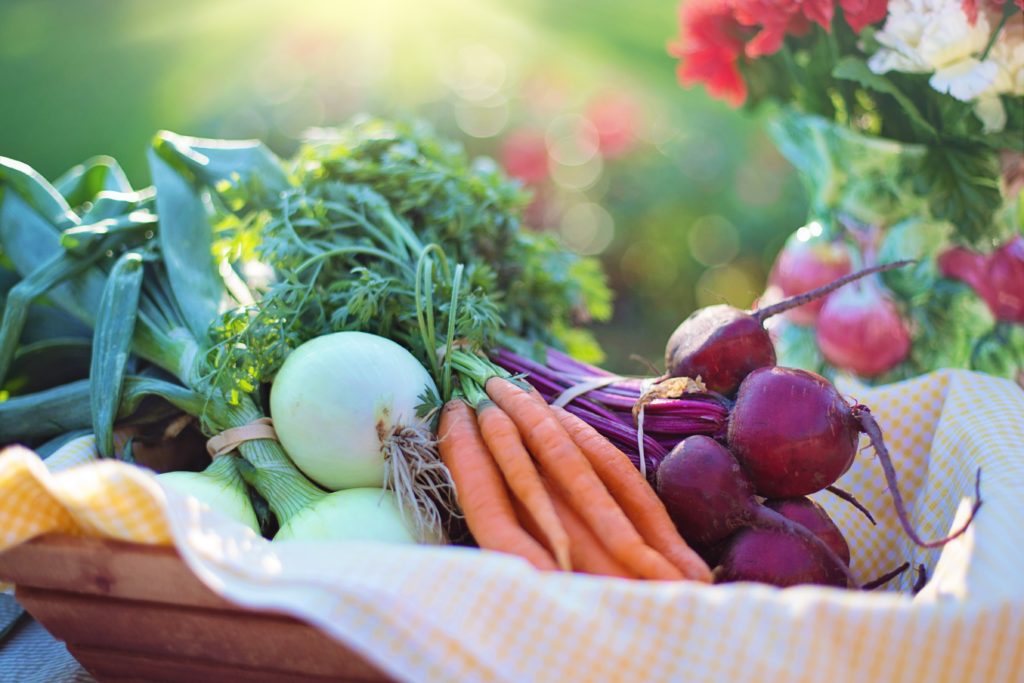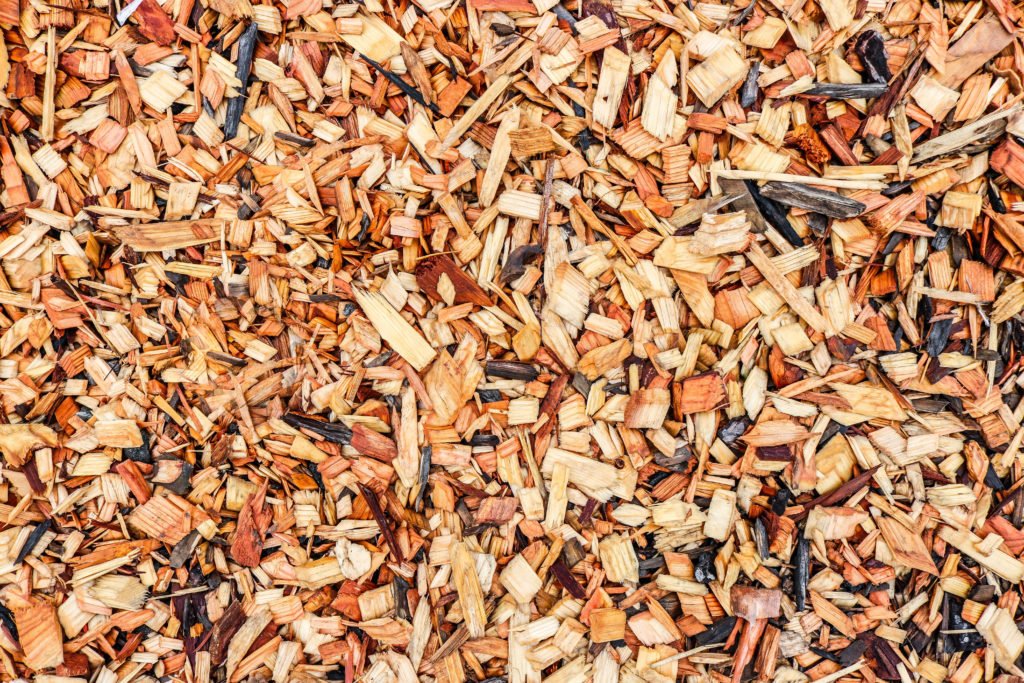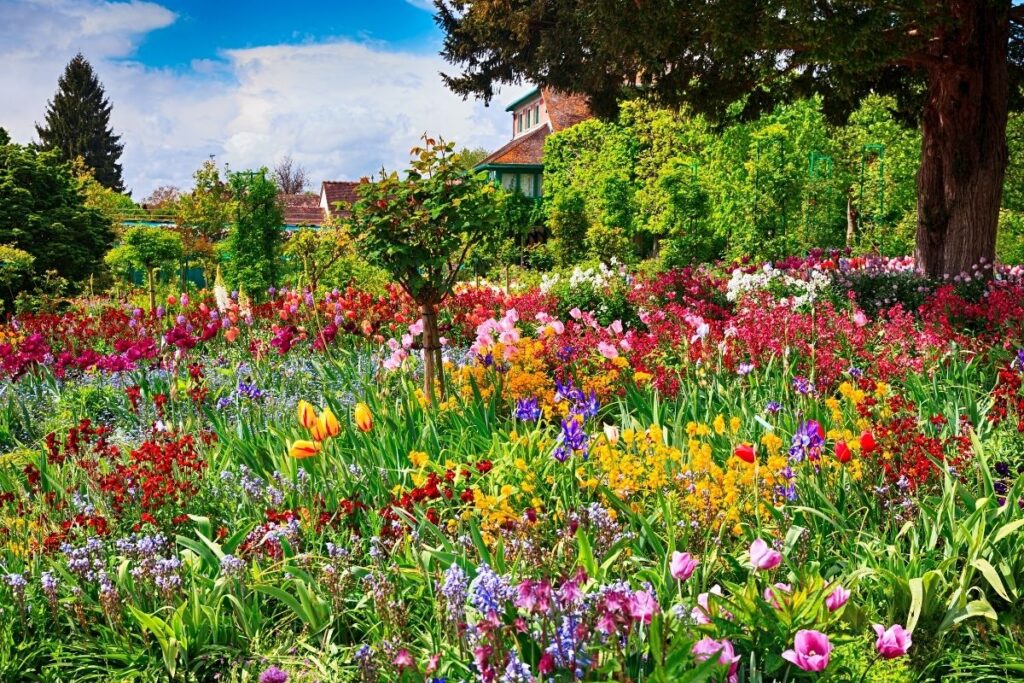The winter is a great time to start planning for this year’s vegetable garden. Depending on your zone, you might want to think ahead by mapping out what easy to grow vegetables you want in your garden this year. Many seeds take up to eight weeks to get to a mature enough stage to be hardened.
The last frost of the season will creep up soon so don’t get caught waiting until the last minute! If you’ve been thinking about planting your own garden from seeds this year, now is the time to do it.
By then, you won’t have to feel guilty about standing in line at the nursery paying for your mature plants! Feel that pride of growing vegetables from seeds by getting started now! Timing is everything!
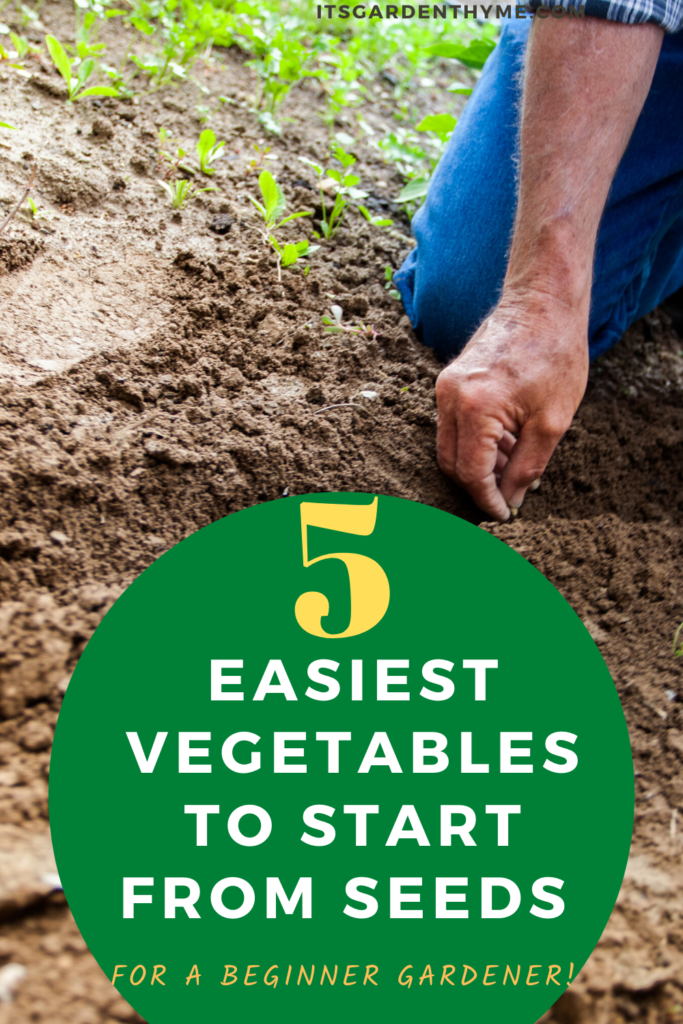
Getting Ready to Sow Seeds
Let’s take this time to be clear that we will not be planting vegetables in January. What we are doing is starting vegetable seeds indoors. If you try to drop your seeds in the ground in the middle of winter, don’t be surprised when nothing pops out of the ground this spring!
Take some time to plan. Purchase seeds you know you will utilize in your garden often. I like easy to grow vegetables in my garden that are versatile and that I can do many different things with.
In addition, plan for the space you have. If you’re going to be planting in your garden, measure the amount of space you have. Take into consideration the size of the plants and the space between each.
If you want to grow beyond your backyard garden capacity, consider container gardening, or a garden tower! These are phenomenal options when you want to maximize your garden power with limited space!
What You Need To Sow Seeds Indoors
Before you get excited and buy every item in the seed catalog, take a moment to get prepared. Since you’ll be starting these seeds in the winter, you need adequate warmth to ensure the seeds thrive.
If you’re concerned about pumping up your heating bill to accommodate your seedlings, fret not! There are a variety of low cost solutions to ensure your seedlings are getting the all the warmth they need.
For example, you can opt to purchase an indoor greenhouse. This is great because you can put it anywhere you might have a little extra space. It would require no electrical power, or additional upkeep. You would simple assemble and then place your grow trays inside. The greenhouse would trap the heat inside and your veggie garden stays safe.
This post contains affiliate links. If you click through and make a purchase, I may earn a commission, at no additional cost to you!
One other consideration that I find super interesting is a heated seedling starter tray or mat. Oh the luxury! This isn’t actually that eccentric to be honest. It’s a wonderful solution if you have a flat, heat safe surface, that you will be placing your seedling tray on. I do not recommend using this on wooden, or flammable surfaces. You know, safety first!
In addition to that, you need a LOT of sunlight. Without strong and direct sunlight, you will get leggy and stretchy stems that will need to be delicately cared for. Avoid that by investing in a few items to ensure your sowing success.
Here’s a solution to ensure your seedlings stay warm: A grow light. You absolutely, with 100% certainty, you are providing enough sunlight.
How to Sow Seeds Indoors
To start your seedlings, you’ll need something to grow them in. Read each of the seed package instructions for how many to sow at once. Here, we have a few options that make any vegetable easy to grow. From my perspective, your best fours options are as follows:
Option 1: Peat Pots
Peat Pots Seed Starters are great because they are biodegradable and you don’t have to worry about transferring the plant into the ground once they are ready! They are big enough to allow additional room for growth.
They are not only Eco Friendly, but kid friendly too! The openings are wide enough to allow little fingers to help you set your seeds. With just a little dirt, you’ll be set!
Options 2: Mini Greenhouse pods
The Mini Greenhouse Seed starter tray is great to get your seedlings off the ground. This one comes with 50 cells of pellets that expand when watered. Dirt included! Perfect option for larger garden projects you are taking on.
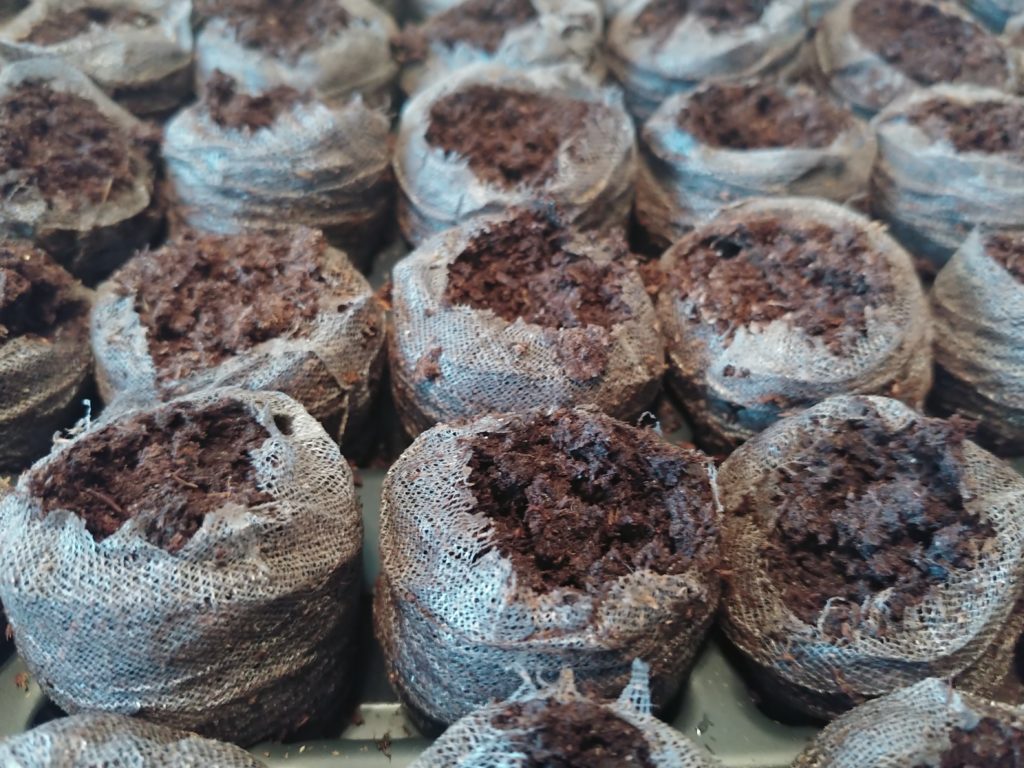
They are practically mess-free and fail-free. The best part is that it offers a dome to maintain humidity while the seedlings are still tiny.
Option 3: Humidity Adjustable Plant Starter
This is another version of the above Jiffy Greenhouse, but give you a lot more control. The IXC Humidity Adjustable Plant Starter Kit comes with plant tags, the adjustable humidity dome and tray.
You get to add your preferred soil mix, which is great if you like to keep your garden clean and super organic. Not to say the other is not a good option, but sometimes we don’t always know what is in those pods.
Humidity control is also your other control feature, which is great because all plants have different needs.
Option 4: Plastic Nursery Pots
Finally, your last option are the tried and true plastic nursery pots. The benefit of these is that they are the largest option for you allowing the most room for your roots. You’ll also likely be able to score a lot more for a lot less money!
This is a 100pc set with labels included. For the price, you can plant countless easy to grow vegetables and herbs for your garden.
Best Easy to Grow Garden Vegetables to Start Now
Now that you have everything ready, let’s start planting! You’ll want to confirm which zone you are in before you start planning. However, we’ll discuss which garden vegetables to grow based on US zones 6-10.
There are so many options to choose from when selecting your veggie garden! The list of easy to grow vegetables is endless, but we all definitely have our favorites. Below are the timelines you need to be mindful of when choosing your vegetables and ground planting times.
Tomatoes
Would any garden be complete without a bunch of tomatoes? Definitely not! Tomatoes need 6-8 weeks until they are ready to go in the ground. This year I finally found seeds for the golden jubilee tomato and have started them already! They aren’t quite orange tomatoes but are a fleshy, low acidic tomato, and slightly sweeter.
Peppers
Pepper plants are also a solid choice to start early as they can take up to 10 weeks to reach a mature enough stage to make it into your vegetable garden for the season. Personally, my favorites are the banana pepper plant and hot big jim pepper!
Eggplant
Another great vegetable to start growing indoors is Eggplant. They take quite a long time to reach maturity, nearly 12 weeks but eggplant growing is easy. Common eggplant types are shikou eggplant black beauty eggplant.
Cauliflower
Cauliflower is a perfect vegetable to start to growing indoors during the winter. You want to get your best crop before the scorching summer heat takes over. Best to get them in early! They are ready in about 7 weeks.
Lettuce
Get your romaine, butterhead, and looseleaf lettuce’s growing early because you’ll want to grow them in succession for extended harvests. Start your first round of crops, then 3 weeks later, start the next. So on and so forth.
To summarize, the best vegetable to grow indoors during the winter are:
- Tomatoes
- Eggplant
- Cauliflower
- Peppers
- Lettuce varieties
Best Garden Herbs & Lettuce to Start Now
Leafy greens should also be started early. You want to get them going fast so you can continue to harvest them more than once throughout your growing season.
Herbs are so functional and give a beautiful brightness to every dish you make! Try using them as a base for a delicious home made salad dressing! They are beyond any dried form you can buy in the store. I highly recommend growing all of your own herbs whenever you can.
The best to start, and have on hand regularly, are basil, parsley, green onion, rosemary, thyme, mint, and dill.
Indoor Herb Garden
Personally, I like to grow herbs outside of the garden. I prefer to give them their own space that I can have more control over, especially if the weather won’t allow me to protect them as much.
I’ll grow them inside my screened in porch during the warmer months. For year-round access to my adored herbs, I’ll take them inside and grow them on my windowsill.
Turning a functional item in the kitchen into a decor piece is always a win in my book!

